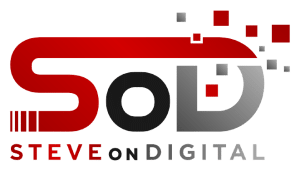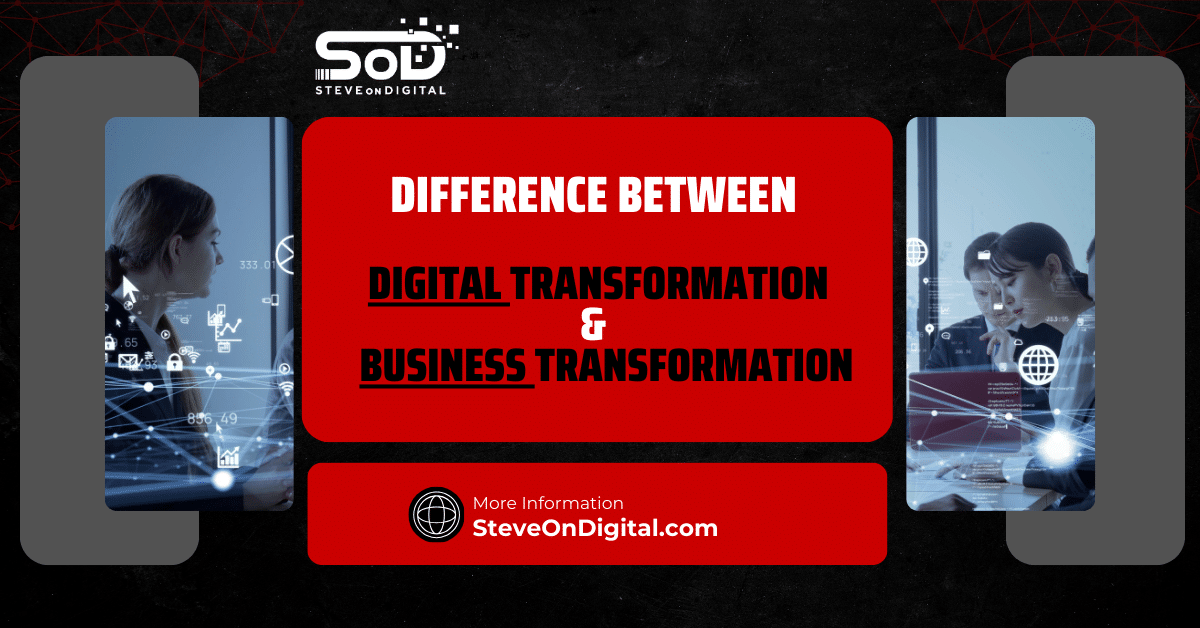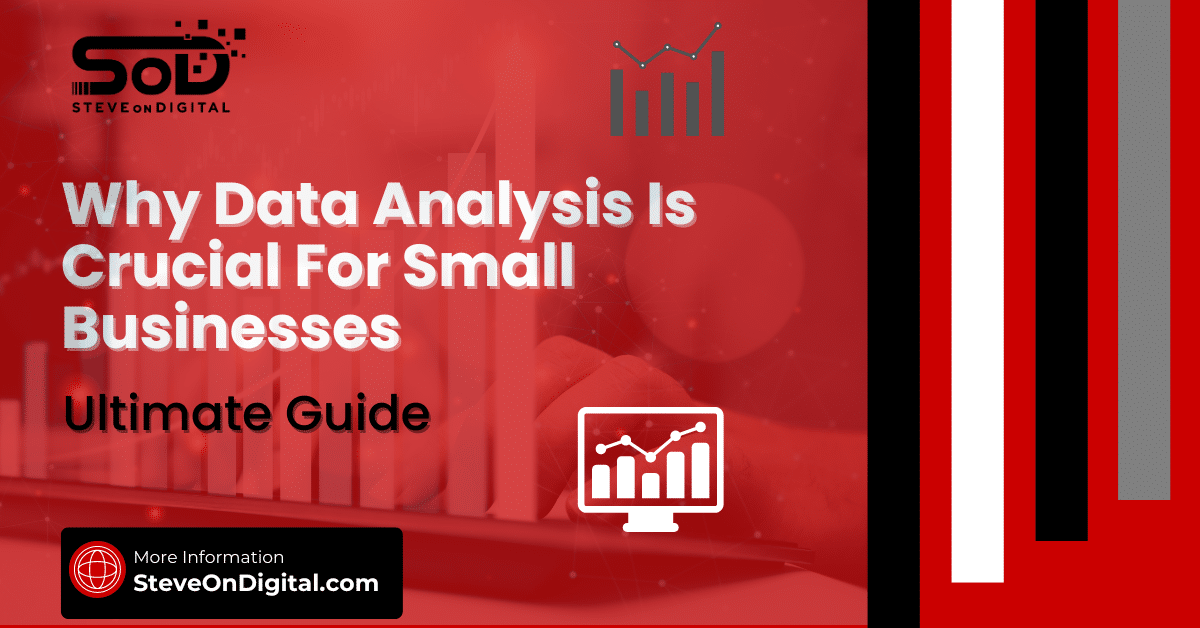People-Process-Technology (PPT) analysis is crucial for optimizing business operations. It ensures that people, processes, and technology work together seamlessly, enhancing efficiency and success.
As a Digital Transformation Specialist with expertise in helping small and medium-sized businesses, I leverage my background in electrical engineering, an MBA, and a master’s in Project Management to guide businesses through the digital landscape. My goal is to assist 1,000,000 business owners and IT directors with practical advice and insights from real-life scenarios.
In this blog, I will break down the PPT framework and explain how to use it to transform your business effectively.
Understanding The People-Process-Technology Framework
The People-Process-Technology framework serves as a strategic approach to managing business operations. This framework helps in identifying the strengths and weaknesses within an organization and provides a roadmap for improvements.
People Component
The people component focuses on the human resources within an organization. This includes employees’ skills, experience, and engagement levels. It’s crucial to understand that people are not just resources but the core drivers of innovation and productivity.
Proper training and continuous development are essential to keep the workforce competent and motivated. For example, when I implemented a new customer relationship management (CRM) system in my business, I ensured that every team member received adequate training. This not only improved their proficiency but also boosted their confidence and job satisfaction.
Process Component
Processes are the systematic steps and procedures that guide how tasks are performed within an organization. Well-defined processes are critical for achieving consistency, efficiency, and quality. They help in streamlining workflows and eliminating bottlenecks.
During one of my projects, I realized that our existing processes were causing delays in project delivery. By conducting a thorough analysis and implementing process improvements, we were able to reduce turnaround times and enhance overall productivity.
Technology Component
Technology acts as the enabler within the PPT framework. It provides the tools and platforms necessary for automating tasks, improving communication, and enhancing productivity. The rapid pace of technological advancements means that businesses must continuously adapt and integrate new technologies to stay competitive.
In my experience, adopting cloud computing solutions significantly improved our data management and collaboration capabilities, leading to better decision-making and faster project execution.
The Interplay Between People, Process, And Technology
The true power of the PPT framework lies in the interplay between its three components. People use technology to perform processes. In turn, technology can streamline processes and make them more efficient, freeing up people to focus on more strategic tasks.
This cyclical relationship creates a dynamic environment where continuous improvement is possible. For instance, by integrating a new project management tool, I was able to automate routine tasks, allowing my team to concentrate on more critical aspects of our projects, ultimately achieving better results.
The Core Principles Of People-Process-Technology
Understanding the core principles of People-Process-Technology (PPT) is essential for any business striving for success in today’s digital age. This framework helps in achieving organizational efficiency by ensuring that all three components work together harmoniously. Let’s dive into each component of the PPT framework and explore its significance.
People Component
The people component is the heart of the PPT framework. It’s all about the individuals who work within the organization. Their skills, engagement, and adaptability play a crucial role in driving business success.
Skills And Training
Proper training is vital for effective technology adoption. When I first introduced a new customer relationship management (CRM) system in my business, I realized that training my team was the key to its success.
Without adequate training, even the best technology can become a burden rather than a benefit. Investing in continuous skill development ensures that employees stay up-to-date with the latest technological advancements and can utilize them effectively.
| Skill | Current Proficiency Level | Required Proficiency Level | Training Needed |
| Customer Service | Intermediate | Advanced | Advanced Customer Service Workshop |
| Project Management | Beginner | Intermediate | Project Management Basics Course |
| Data Analysis | Intermediate | Advanced | Advanced Data Analysis Techniques |
Employee Engagement
Maintaining high levels of employee engagement during technological changes is another crucial aspect. Engaged employees are more productive and motivated. One strategy I found effective was involving my team in the decision-making process when introducing new technologies.
This not only made them feel valued but also reduced resistance to change. According to a Gallup report, businesses with highly engaged employees see a 21% increase in profitability.
Process Component
Processes are the structured methods and practices that guide how work is done within an organization. They are the backbone of operational efficiency and quality.
Process Improvement
Identifying and improving existing processes is essential for increasing efficiency. In my experience, conducting regular process audits helps in pinpointing inefficiencies and areas for improvement.
For example, by streamlining our project management process, we were able to reduce project delivery times by 20%. Continuous improvement should be a core principle in every business.
| Process | KPI | Current Value | Target Value | Improvement Plan |
| Order Processing | Cycle Time | 48 hours | 24 hours | Implement automation software |
| Customer Support Response | First Response Time | 6 hours | 1 hour | Introduce AI-based support system |
| Inventory Management | Stock Accuracy | 85% | 95% | Deploy RFID technology |
Process Deployment
Deploying new processes involves careful planning and integration with existing ones. When I implemented a new project management tool, it was crucial to ensure that it aligned with our current workflows.
This required a detailed analysis of our existing processes and strategic planning to integrate the new tool seamlessly. This step is critical to avoid disruptions and ensure smooth transitions.
Technology Component
The technology component of the PPT framework focuses on the tools and platforms that enable and enhance business operations. It includes everything from software applications to hardware infrastructure.
New Technologies
Evaluating and implementing new technologies effectively is crucial for staying competitive. I always start by assessing the specific needs of my business and then researching technologies that can address those needs.
For instance, adopting cloud computing solutions significantly improved our data management and collaboration capabilities. It’s important to stay informed about the latest technological advancements and choose solutions that offer the most value.
Technology Solutions
There are numerous technology solutions available that support business objectives. Some examples include CRM systems, project management tools, and data analytics platforms.
These solutions help in automating manual tasks, improving communication, and providing insights for better decision-making. For example, using a CRM system has helped us manage customer interactions more efficiently, leading to better customer satisfaction and retention.
Achieving Organizational Efficiency With Ppt Analysis
Conducting a thorough PPT analysis can significantly contribute to achieving greater organizational efficiency. By understanding and optimizing each component, businesses can streamline workflows and improve overall performance.
Streamline Workflows
One of the key benefits of PPT analysis is the ability to streamline business workflows. By identifying bottlenecks and inefficiencies in processes, businesses can implement changes that enhance productivity.
For example, automating repetitive tasks using technology can free up employees to focus on more strategic activities. This not only improves efficiency but also boosts employee morale.
Automating Manual Tasks
Automation is a powerful tool for increasing efficiency. By automating manual tasks, businesses can reduce errors, save time, and increase accuracy. For instance, automating data entry tasks using software solutions can eliminate human errors and ensure that data is captured accurately. According to a study by McKinsey, automation can increase productivity by up to 20%.
The Role Of Change Management In Ppt Analysis
Implementing PPT analysis often involves significant changes within an organization. Effective change management is essential to ensure a smooth transition and minimize resistance.
Managing Resistance
Resistance to change is a common challenge when implementing new technologies or processes. To manage this, I always focus on clear communication and involve employees in the change process. Providing adequate training and support also helps in reducing resistance.
According to a Prosci study, organizations with effective change management practices are six times more likely to achieve their project objectives.
Communication Plans
Developing effective communication plans is crucial for facilitating change. Clear and consistent communication helps in keeping everyone informed about the changes and their benefits.
During one of my projects, I set up regular meetings and updates to ensure that all team members were on the same page. This not only improved transparency but also fostered a sense of collaboration and trust.
Practical Steps For Conducting Ppt Analysis
Conducting a People-Process-Technology (PPT) analysis can be the key to unlocking your business’s full potential. Here’s a step-by-step guide to help you through the process.
Assessing Current State
Evaluating the current state of your people, processes, and technology is the first crucial step. This involves taking a close look at your existing processes, understanding the strengths and weaknesses of your team, and analyzing the current technology stack in use.
- People: Evaluate the skills and capabilities of your team. Are they well-trained and equipped to handle new technologies? I often use surveys and performance reviews to get a clear picture of where my team stands.
- Processes: Look at your current workflows. Are they efficient and effective? I like to map out each process visually to identify bottlenecks and inefficiencies.
- Technology: Assess your current technology framework. Is it up-to-date and aligned with your business objectives? Sometimes, outdated technology can be a significant hindrance to progress.
Identifying Gaps
Once you’ve assessed the current state, the next step is to identify gaps and areas for improvement in each component.
- People: Identify skill gaps and training needs. Are there areas where your team lacks knowledge or expertise? I remember when we first adopted a new project management tool; the team needed extensive training to use it effectively.
- Processes: Pinpoint inefficiencies and redundant steps in your workflows. For example, during one of my projects, I noticed that our data capture processes were taking too long and implemented automation to streamline the task.
- Technology: Determine where your technology falls short. Are there newer, more efficient solutions available? Identifying these gaps can help you prioritize technology upgrades and investments.
Developing Action Plans
Creating actionable plans based on your analysis is vital for driving improvement. These plans should be specific, measurable, and time-bound.
- People: Develop a training plan to address skill gaps. This might involve workshops, online courses, or on-the-job training. I always ensure that the training resources are accessible and tailored to my team’s needs.
- Processes: Implement process improvements by redesigning workflows and eliminating inefficiencies. For instance, I once restructured our customer relationship management process to reduce response times and improve client satisfaction.
- Technology: Plan for technology upgrades and integrations. This might involve investing in new tools, upgrading existing systems, or implementing new technology solutions. In my experience, adopting cloud computing services significantly enhanced our operational efficiency.
Case Studies Of Successful Ppt Analysis
Real-life examples can provide valuable insights and inspiration. Here are two case studies of businesses that successfully implemented PPT analysis.
Case Study 1
Company A faced challenges with outdated technology and inefficient processes. After conducting a thorough PPT analysis, they identified the need for better project management tools and improved employee training.
- People: They invested in comprehensive training programs to upskill their employees.
- Processes: They streamlined their workflows by automating manual tasks and redesigning their processes.
- Technology: They adopted new project management software and integrated it with their existing systems.
The result was a 30% increase in productivity and a significant reduction in project delivery times.
Case Study 2
Company B struggled with slow adoption rates of new technologies. Their PPT analysis revealed gaps in employee engagement and process efficiency.
- People: They focused on improving employee engagement by involving them in decision-making processes and providing continuous feedback.
- Processes: They identified and eliminated redundant steps in their workflows, leading to faster and more efficient operations.
- Technology: They upgraded their tech stack with more user-friendly tools and provided adequate training for a smoother transition.
This led to a more engaged workforce and a 25% improvement in operational efficiency.
Common Challenges And Solutions In Ppt Analysis
While PPT analysis can drive significant improvements, it also comes with its own set of challenges. Here are some common issues and how to overcome them.
Insufficient Training Resources
A lack of training resources can hinder the effective adoption of new technologies. To address this:
- Solution: Invest in high-quality training materials and programs. When I faced this issue, I collaborated with training providers to develop tailored courses for my team.
Slow Adoption Rates
Resistance to change and slow adoption rates can be major obstacles. To combat this:
- Solution: Develop a change management strategy that includes clear communication, employee involvement, and continuous support. I found that regular updates and involving employees in the change process significantly reduced resistance.
Integrating Technology Into Business Processes
Effectively integrating new technologies into existing business processes is crucial for maximizing their benefits. Here’s how to do it.
Evaluating Technology Fit
Before implementing any new tool, it’s important to evaluate whether it fits into your current processes.
- Criteria: Consider factors like compatibility with existing systems, ease of use, and potential for improving efficiency. I always run pilot tests to assess the fit before full-scale implementation.
Implementing New Tools
Best practices for implementing new technological tools include:
- Planning: Develop a detailed implementation plan that outlines the steps, timelines, and responsibilities.
- Training: Provide comprehensive training to ensure that everyone knows how to use the new tool effectively.
- Monitoring: Continuously monitor the performance of the new tool and gather feedback to make necessary adjustments. When I introduced a new data analytics platform, regular check-ins and feedback sessions were crucial for its successful adoption.
| Task | Responsible Person | Deadline | Status |
| Evaluate Technology Fit | IT Manager | August 1, 2024 | In Progress |
| Develop Implementation Plan | Project Manager | August 15, 2024 | Not Started |
| Conduct Training Sessions | HR Department | September 1, 2024 | Not Started |
| Monitor and Collect Feedback | Team Leads | Ongoing | Not Started |
By following these steps, you can seamlessly integrate new technologies into your business processes and achieve greater organizational efficiency.
The Importance Of Company Culture In Ppt Analysis
Company culture plays a pivotal role in the success of any People-Process-Technology (PPT) analysis. It influences how employees interact, adopt new processes, and embrace technology. A strong, positive culture can drive engagement, innovation, and efficiency, while a weak culture can hinder progress and lead to resistance.
Fostering A Culture Of Continuous Improvement
Encouraging a culture of continuous improvement within an organization is crucial for long-term success. This involves creating an environment where employees feel empowered to suggest and implement changes.
- Employee Involvement: In my experience, involving employees in decision-making processes fosters a sense of ownership and accountability. For instance, when we were looking to streamline workflows, I set up regular brainstorming sessions where team members could share their ideas and solutions. This not only generated innovative ideas but also increased buy-in for the changes.
- Feedback Mechanisms: Establishing robust feedback mechanisms is another critical aspect. Regular feedback loops help identify areas for improvement and ensure that changes are effective. I use tools like surveys and one-on-one meetings to gather feedback and make necessary adjustments.
Aligning Culture With Business Objectives
Aligning company culture with business objectives ensures that everyone is working towards the same goals. This alignment is essential for the successful implementation of PPT analysis.
- Clear Communication: Communicating business objectives clearly and consistently helps employees understand the bigger picture. During a major digital transformation project, I held town hall meetings and sent regular updates to keep everyone informed about our goals and progress.
- Recognition and Rewards: Recognizing and rewarding employees who contribute to achieving business objectives reinforces positive behaviors and motivates others. For example, we implemented an employee recognition program that highlighted individuals and teams who made significant contributions to our project management improvements.
Measuring The Success Of Ppt Analysis
Measuring the success of PPT analysis is essential to ensure that the efforts are yielding the desired results. This involves tracking key performance indicators (KPIs) and continuously monitoring progress.
Key Performance Indicators (KPIs)
Identifying and tracking the right KPIs is crucial for measuring the effectiveness of PPT analysis. These metrics provide quantifiable data that can guide decision-making and highlight areas for improvement.
- Process Efficiency: Track metrics like cycle time, error rates, and throughput to measure process efficiency. For instance, after streamlining our business processes, I observed a 15% reduction in cycle time, indicating improved efficiency.
- Employee Engagement: Measure employee satisfaction and engagement levels through surveys and retention rates. High engagement often correlates with better performance and lower turnover rates.
- Technology Utilization: Monitor the adoption and usage rates of new technologies. Tools like CRM systems should have high utilization rates if they are effectively integrated and embraced by the team.
Continuous Monitoring
Continuous monitoring and feedback loops are essential for sustaining the improvements achieved through PPT analysis. This involves regularly reviewing performance data and making necessary adjustments.
- Regular Reviews: Schedule regular reviews to assess the progress of PPT initiatives. I conduct quarterly reviews to evaluate our performance against the set KPIs and make any required changes.
- Feedback Loops: Implement feedback loops to gather insights from employees and stakeholders. This helps in identifying any issues early and addressing them promptly. For example, after introducing a new technology framework, I collected feedback from the team to ensure it was meeting their needs and expectations.
Future Trends In People-Process-Technology
Staying ahead of future trends and advancements in PPT analysis is crucial for maintaining a competitive edge. Here are some emerging trends to watch.
Emerging Technologies
Emerging technologies are continuously reshaping the business landscape. Staying informed about these advancements can help in leveraging them for better results.
- Artificial Intelligence (AI): AI is revolutionizing many aspects of business operations, from automating manual tasks to providing insights through data analytics. Implementing AI solutions can significantly enhance efficiency and decision-making.
- Cloud Computing: Cloud computing offers scalable and flexible solutions for data management and collaboration. In my experience, adopting cloud-based tools has improved our operational efficiency and reduced costs.
Evolution Of Business Processes
Business processes are evolving with technological advancements, leading to more streamlined and efficient operations.
- Automation: Automating routine tasks can free up employees to focus on more strategic activities. For example, automating data capture processes has reduced manual errors and improved data accuracy.
- Agile Methodologies: Adopting agile methodologies can enhance flexibility and responsiveness to changes. This approach has helped us in managing projects more effectively and delivering results faster.
Final Thoughts
Conducting a comprehensive People-Process-Technology analysis is essential for achieving business success in today’s digital age. By focusing on people, improving processes, and leveraging technology, businesses can enhance efficiency, drive innovation, and achieve their objectives.
The interplay between people, processes, and technology is dynamic and requires continuous attention and improvement. By fostering a positive company culture, aligning it with business objectives, and staying ahead of future trends, you can ensure long-term success and sustainability.
Remember, the key to successful PPT analysis lies in understanding the unique needs of your organization and implementing tailored strategies that address those needs. With the right approach, you can transform your business and achieve greater heights.




